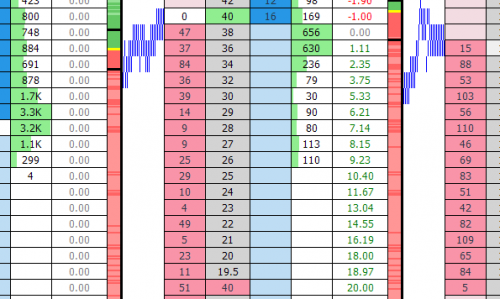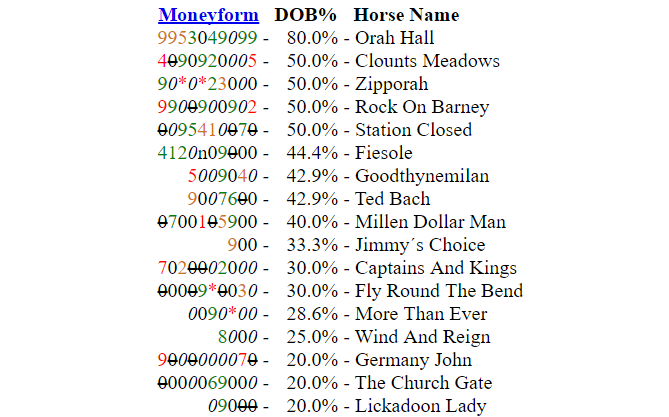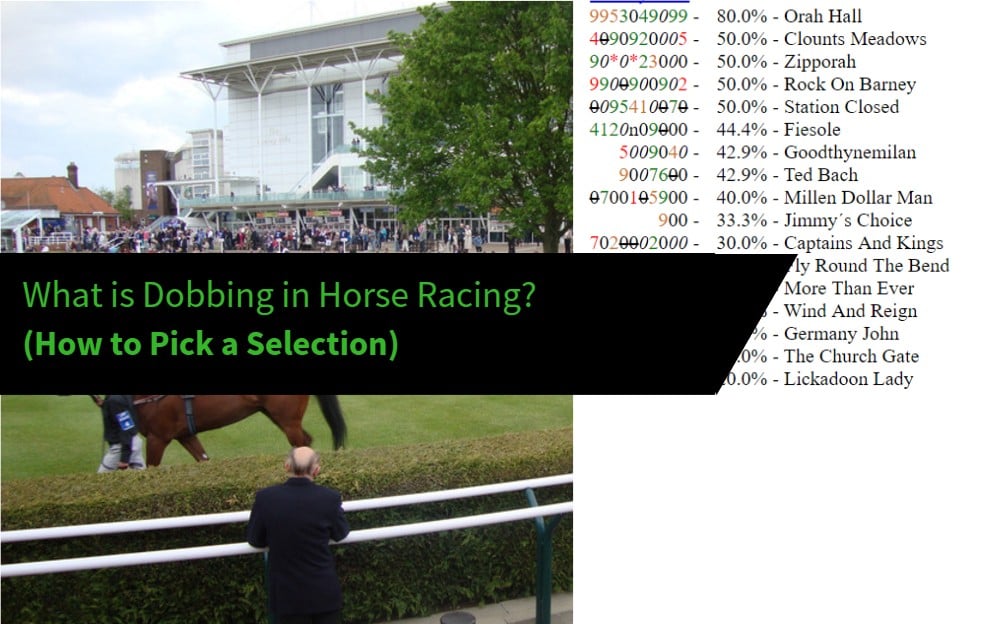Following a posts about in-play racing strategies there were a few questions, what is dobbing being one of them.
Here’s a quick roundup to explain what dobbing is and how it works, along with an example of when you may want to use it…
What is Dobbing in Horse Racing?
Dobbing means ‘Double or Bust’. It’s just a slang word to describe a particular strategy.
Essentially, the word is interchangeable with ‘trading’ because it means betting on a price movement, rather than the event itself.
The strategy relies on a minimum of 50% reduction in price. It’s simple, you either double your stake, or go ‘bust’ losing the lot. The trick is in the strike-rate. Obviously there’s a small amount of generated commission to factor into results as well.
Successful dobbers will only target horses that have a history of routinely trading significantly lower in-play, on a consistent basis. Some horses travel extremely well throughout a race, giving the impression their chance of winning is greater than it actually is. Patternform has its own dobbing cards and in-play statistics to help you make the most of the dobbing strategy.
So, how exactly does it work?
How Dobbing Works in Horse Racing…
This example should make things clearer:
When a horses price is halved, you’re left in a position of 100% return on stake (at odds of 2.02 or above).
So, the aim is to open the bet at the starting price (or shortly before, depending on your market reading ability) and then lay it off at half the starting price, or lower.
See below;

Having a more than a 50% strike-rate leaves you in profit.
A back stake of £20 at 38.0 means a lay stake of £40 at 19.0, and a profit of £20 should the bet be matched. Stake doubled, or ‘dobbed’.
When to Consider Dobbing…
At this point, you’re probably wondering ‘well, that’s great but how do I know what horses will DOB?’
It’s a fair question. There are a couple of different approaches;
- The Pace Angle – When a runner reaches the lead and stays there, the likelihood of it dobbing increases. It’s subjective to the race make-up though, you’ll need to watch how things work out too.
- Statistical Data – On the other hand, you can go off previous form and statistics for select horses. The downside being, there aren’t a whole load of horses that qualify each day.
I always advise Patternform and Proform when it comes to the numbers. Here’s an example from Patternform Dobbing Cards:
Horse: Orah Hall

You can see from the image above, Oprah Hall has ‘dobbed’ 8 out of the last 10 times it ran.
Better still, 5 of the last 10 runs the numbers shown on the overview are green. Of the remaining 5 runs, 3 are yellow.
Why is that important?
Green numbers show that the horses price dropped between 50% and 25% of its initial starting price. Where as yellow show that it dropped even further, between 25% and 12.5% of the starting price. It just adds a little more depth to the overview.
A little homework via the sportinglife show’s that the remaining two runs the horse was pulled up. Hardly had the chance to ‘DOB’ right?
Generally it looks like Oprah Hill is a regular dobber, making it a better chance than most.
Dobbing Dangers to Look Out For
Stats are great. But they don’t show the whole picture.
I always, 100% advise doing a little further homework and digging deeper. Most of the time it’s all the difference, I really mean that.
Blindly following stats like the one above isn’t a true interpretation as to if a horse will dob or not when there are additional changes. I’m talking about things like; big change in distance run or race type. Also, a scan at other potential dobbers in the race is worth checking. You don’t want to bet when there’s a lot of competition, at least I don’t anyway. Strong competition always leads to a diluted edge.
Dobbing in general is simple enough to execute! But selection is slightly more difficult…
Related Article: In-Play Horse Racing Strategies


2 thoughts on “What is Dobbing in Horse Racing? (How to Pick a Selection)”
Hi I’m Marco I enjoy watching your videos of horse racing handicapping.Can you please teach me deep study in handicapping horse racing.
Handicapping doesn’t help us for dobbing. It’s more to do with the horses running style and appearance. I.E. how strong it apppears to travel. This affects in-running prices.